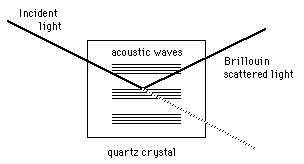Mode Locking for Lasers
A laser cavity will have a large number of longitudional standing wave modes within the spectral envelope of the laser transition. Even though the laser is in fact nearly monochromatic, the modes are so close together that
there can be many thousands of modes within that narrow frequency range.
If there is no influence to choose modes, then random quantum "noise"
will trigger modes randomly and laser action can occur essentially continuously and with random phases with respect to other longitudional modes. If there is some influence which Q-switches the laser to interrupt the laser action and then lets through a brief burst of light, then that light pulse will make use of the population inversion which has accumulated in the interval and produce a stronger pulse. This helps with the operation of a pulsed laser oscillator.
Once initiated, a "locked" pulse can cycle the cavity every t=2L/c in time, and if it is allowed passage by the Q-switcher, the cycle of one pulse every 2L/c seconds will be repetitive.
Mode locking contributes to producing short pulses. At the time of initiation of the pulse when the Q-switcher "opens the gate", the modes are locked together with the same phase at a given time. Because the different modes oscillate at different frequency, they lose phase coherence and effectively lose coherence and cancel in a time which is the inverse of their overall frequency difference. If there is a wider frequency difference, the pulse produced is shorter. Dye lasers with extremely wide bandwidths have been used to produce ultrashort pulses.
|
Index
Laser concepts
Reference
Garmire |

